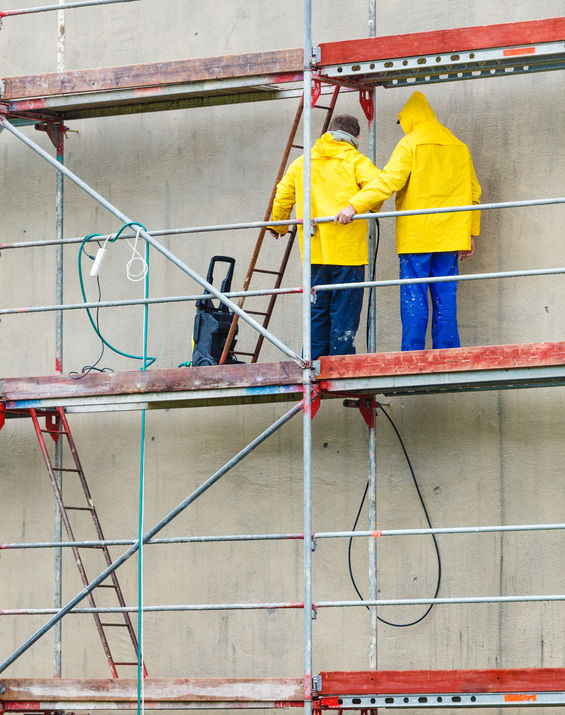Ladders
The most frequent fall-from-elevation accident is a fall off ladders. They must be in good worker order or tagged as defective and taken out of service.
- Make sure portable, hook-on, and attachable ladders are positioned so as not to tip the scaffold.
- Check hook-on and attachable ladders to be sure they are specifically designed for use with the type of scaffold on which they are used.
- Make sure hook-on and attachable ladder rungs:
- are positioned so that their bottom rung is not more than 24 inches above the scaffold supporting level;
- have uniform spacing between rungs of a maximum 16¾ inches;
- have minimum rung length of 11½ inches; and
- have rest platforms provided at a maximum of 35-foot vertical intervals
- Ensure stairway-type ladders:
- are positioned so that their bottom step is not more than 24 inches above the scaffold supporting level;
- have rest platforms at maximum vertical intervals of 12 feet;
- have a minimum step width of 16 inches, except for mobile scaffold stairway-type ladders, which must have a minimum step width of 11½ inches; and
- have slip-resistant treads on all steps and landings
- Check that steps and rungs of ladders and stairway-type ladders line up vertically with each other between rest platforms.
Knowledge Check Choose the best answer for the question.
2-8. What do you need to do with a ladder that is defective?
You forgot to answer the question!

